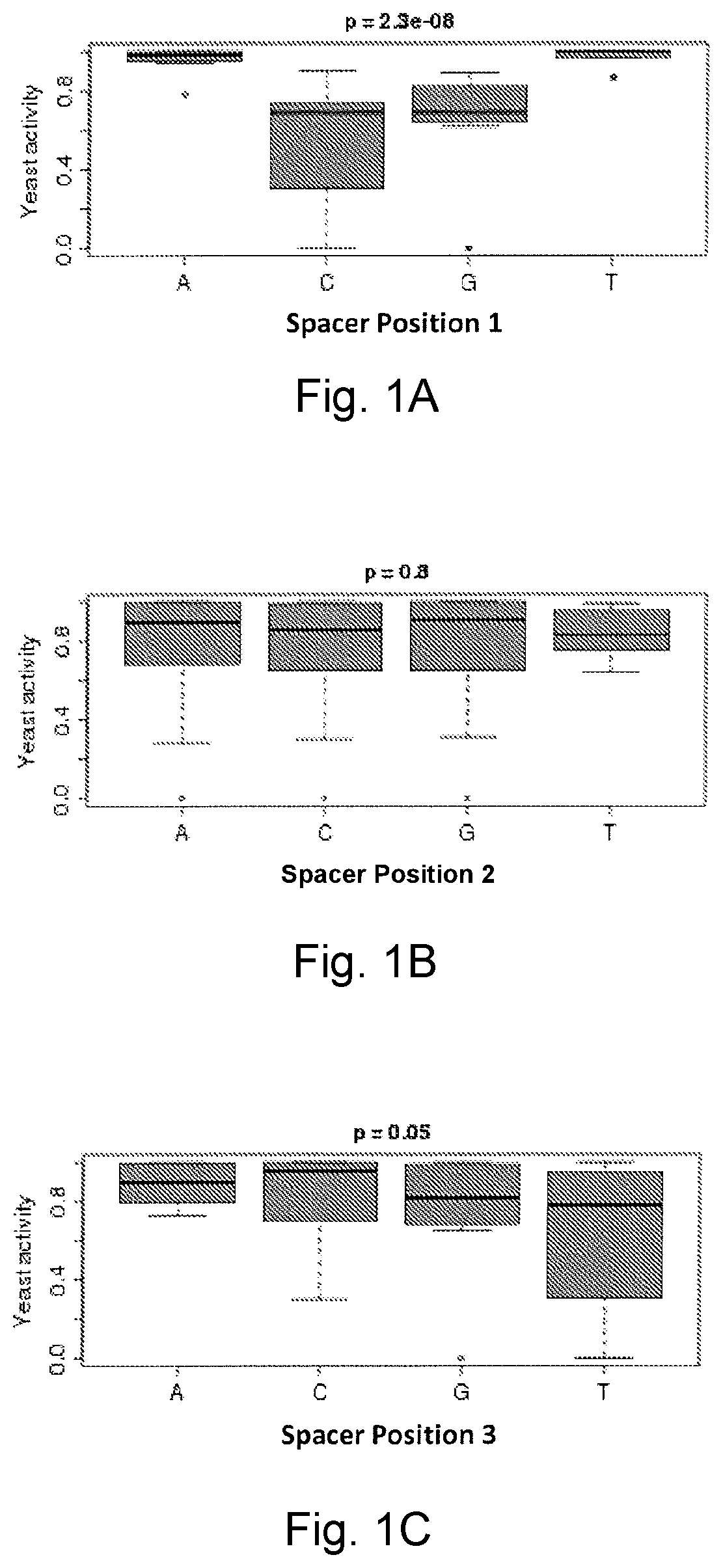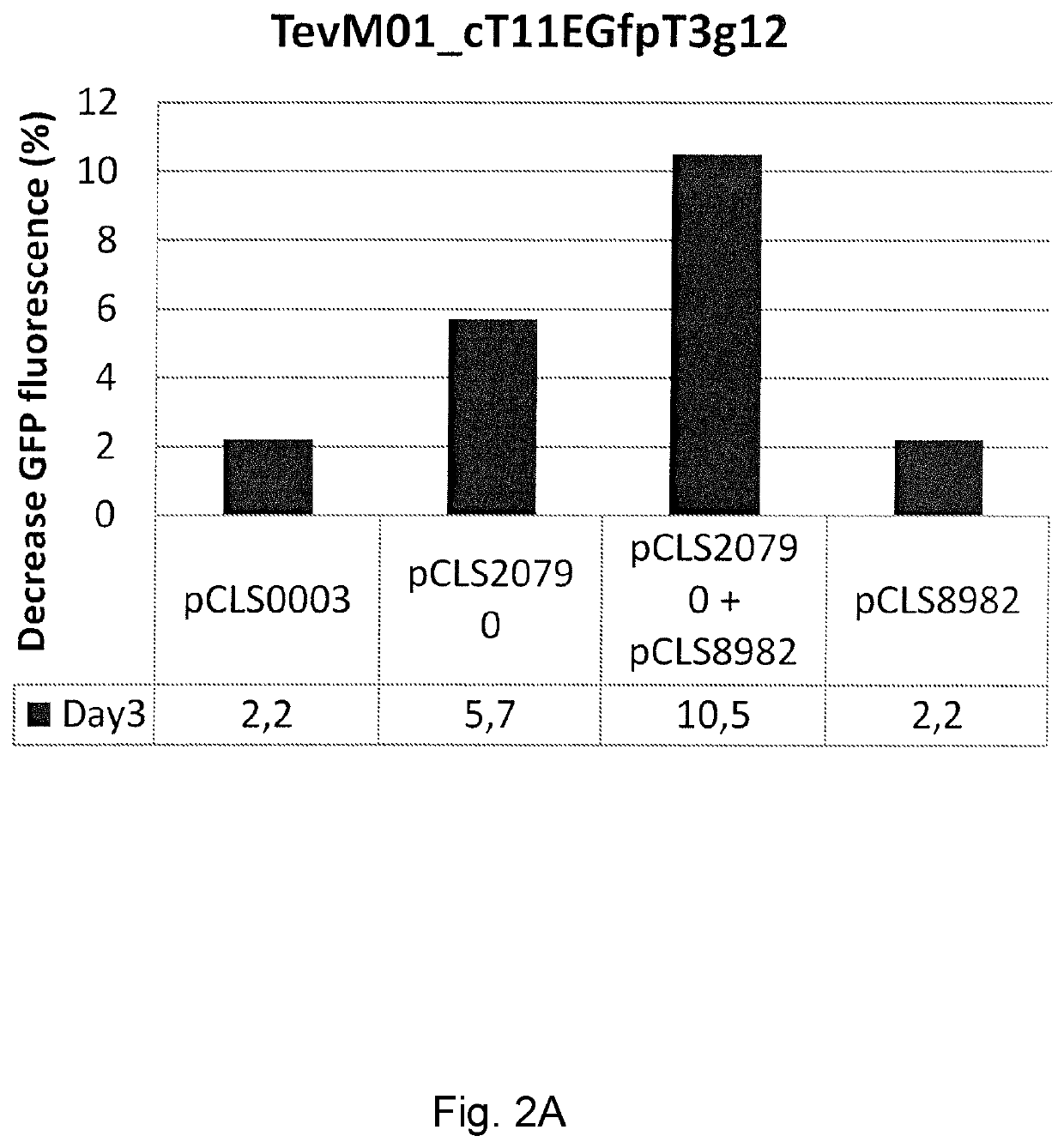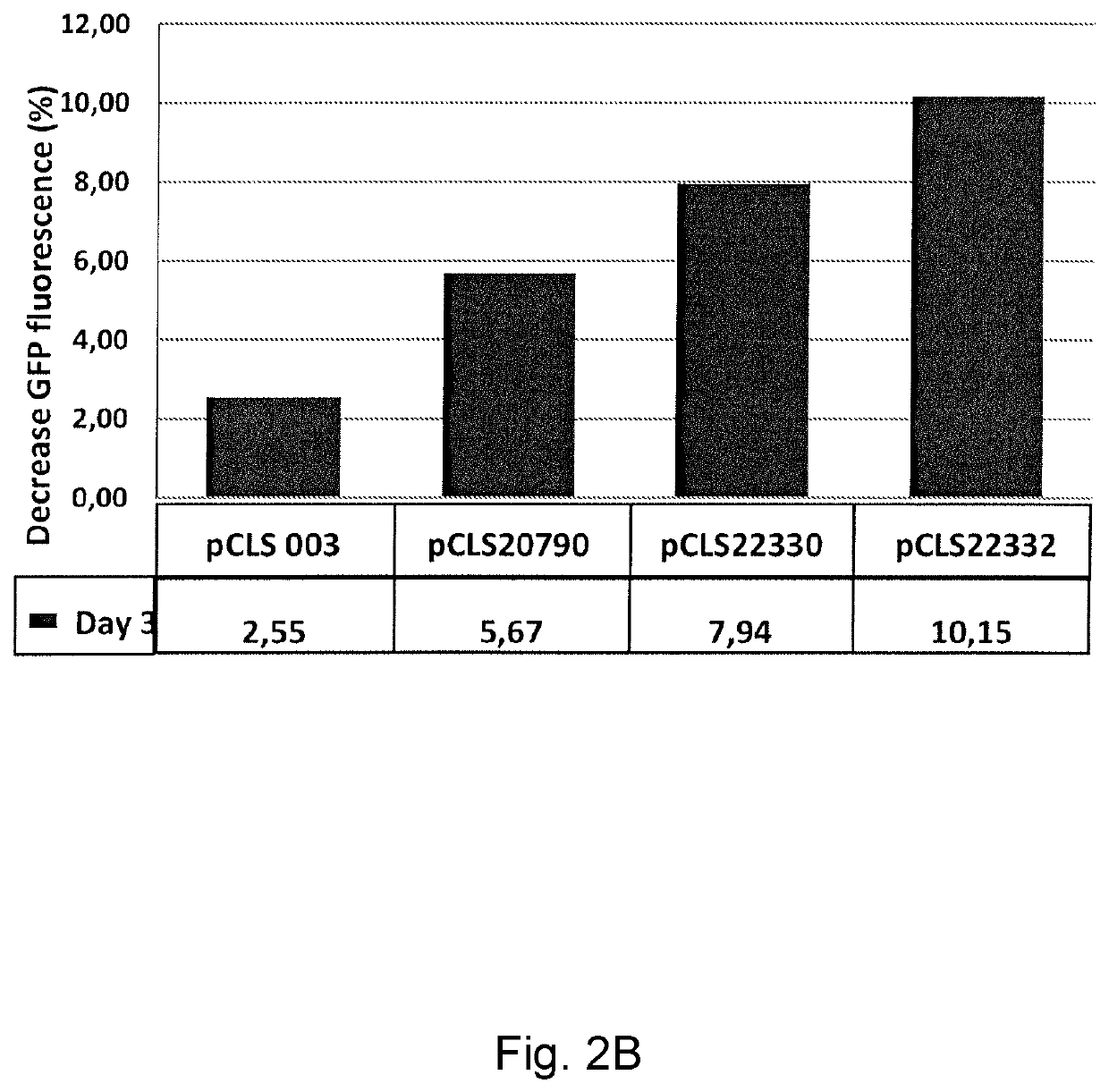Tevi chimeric endonuclease and their preferential cleavage sites
a chimeric endonuclease and cleavage site technology, applied in the field of chimeric endonuclease and their preferential cleavage sites, can solve the problems of poor cleavage activity and interfere with the overall specificity of chimeric endonuclease, and achieve the effect of efficient cleavage activity
- Summary
- Abstract
- Description
- Claims
- Application Information
AI Technical Summary
Benefits of technology
Problems solved by technology
Method used
Image
Examples
example 1
ion of Different TevI Chimeric Endonucleases
[0118]Construction of TevD02::cT11-AvrBs3
[0119]A variant of the I-TevI catalytic domain named TevD02 (SEQ ID NO: 268) consisting of the N-terminal 183 residues of the wild-type catalytic domain of I-TevI (SEQ ID NO: 257) was amplified by the PCR on template TevCreD02 (SEQ ID NO: 269 protein in plasmid pCLS6615 (SEQ ID NO: 270)) using the primer pair CMP_G001 (SEQ ID NO: 271) and CMP_G068 (SEQ ID NO: 272).
[0120]The sT2 (SEQ ID NO: 259) core TALE scaffold was selected to generate pCLS7865-cTAL11_NFS1 (pCLS9008, SEQ ID NO: 273), where NFS1 designates the amino acid sequence-GSSG- (with underlying restriction sites BamHI and Kpn21 in the coding DNA to facilitate cloning).
[0121]TevD02 was subcloned into the pCLS9008 backbone by restriction and ligation using NcoI and Kpn2I restriction sites, yielding pCLS7865-TevD02::cT11 (pCLS12730, SEQ ID NO: 274). The fusion contains the sequence-QGPSG-linking the TALE-derived DNA binding domain and I-TevI d...
example 2
Requirement for TevI::TALE Cleavage in an In Vivo Yeast Assay
[0139]All the yeast target reporter plasmids containing the TALE nucleic acid target sequences were constructed as previously described (International PCT Applications WO 2004 / 067736 and in (Epinat, Arnould et al. 2003; Chames, Epinat et al. 2005; Arnould, Chames et al. 2006; Smith, Grizot et al. 2006)).
[0140]As the natural I-TevI linker can act as a distance determinant for nucleic acid cleavage by the catalytic domain, we asked whether a similar relationship exists in the context of a TALE fusion. The TevD02::cT11-AvrBs3 construct was tested in a yeast SSA assay as previously described (International PCT Applications WO 2004 / 067736 and in (Epinat, Arnould et al. 2003; Chames, Epinat et al. 2005; Arnould, Chames et al. 2006; Smith, Grizot et al. 2006)) on targets containing a single AvrBs3 recognition site and the I-TevI cleavage sequence CAACGC (SEQ ID NO:1) spaced from 0 to 50 bps away from the T1 of the AvrBS3 TALE bin...
example 3
quence Specificity for TevI::TALE and TevI::BurrH_36 Cleavage
PUM
 Login to View More
Login to View More Abstract
Description
Claims
Application Information
 Login to View More
Login to View More - R&D
- Intellectual Property
- Life Sciences
- Materials
- Tech Scout
- Unparalleled Data Quality
- Higher Quality Content
- 60% Fewer Hallucinations
Browse by: Latest US Patents, China's latest patents, Technical Efficacy Thesaurus, Application Domain, Technology Topic, Popular Technical Reports.
© 2025 PatSnap. All rights reserved.Legal|Privacy policy|Modern Slavery Act Transparency Statement|Sitemap|About US| Contact US: help@patsnap.com



